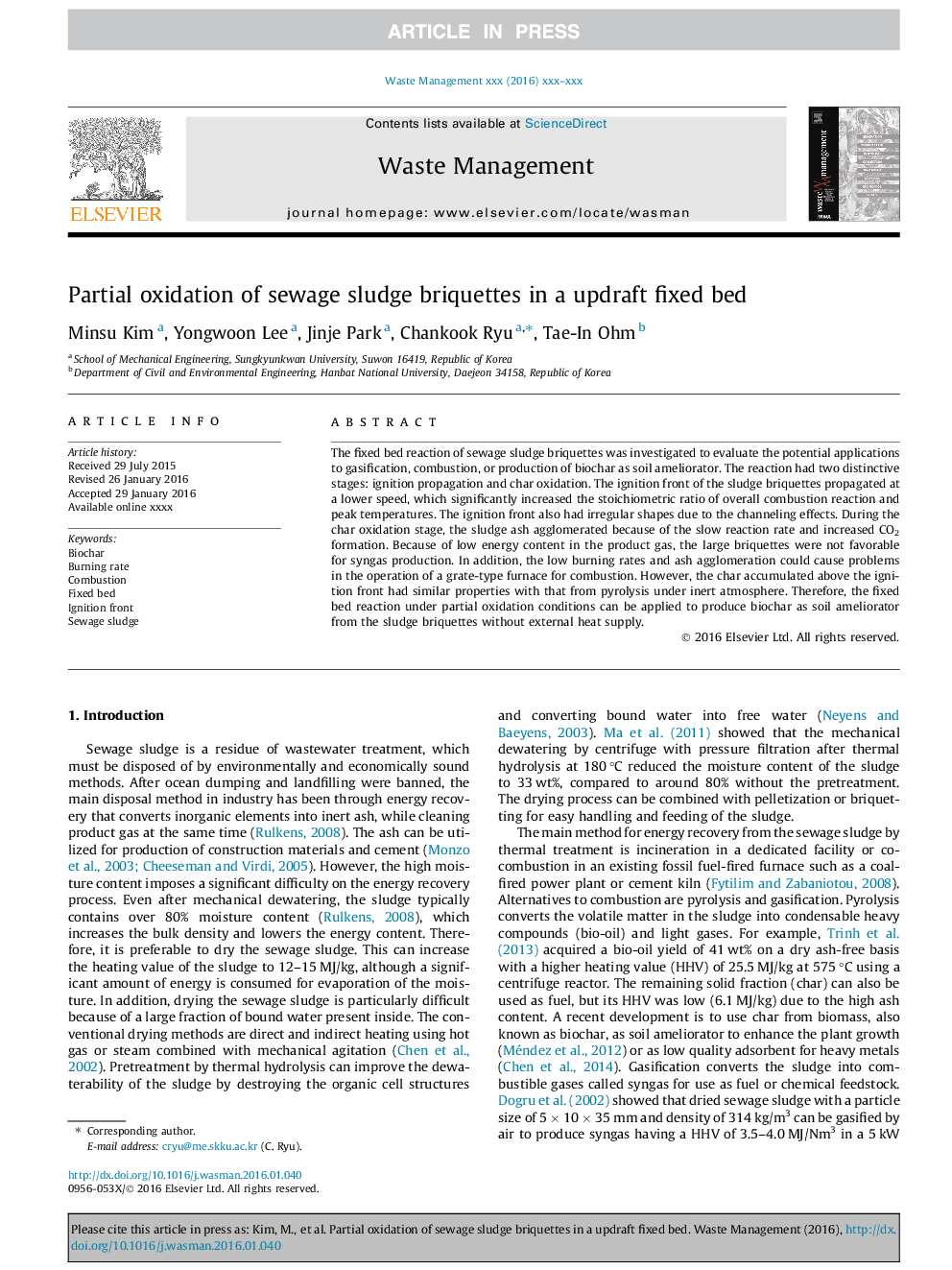| Article ID | Journal | Published Year | Pages | File Type |
|---|---|---|---|---|
| 6353782 | Waste Management | 2016 | 8 Pages |
Abstract
The fixed bed reaction of sewage sludge briquettes was investigated to evaluate the potential applications to gasification, combustion, or production of biochar as soil ameliorator. The reaction had two distinctive stages: ignition propagation and char oxidation. The ignition front of the sludge briquettes propagated at a lower speed, which significantly increased the stoichiometric ratio of overall combustion reaction and peak temperatures. The ignition front also had irregular shapes due to the channeling effects. During the char oxidation stage, the sludge ash agglomerated because of the slow reaction rate and increased CO2 formation. Because of low energy content in the product gas, the large briquettes were not favorable for syngas production. In addition, the low burning rates and ash agglomeration could cause problems in the operation of a grate-type furnace for combustion. However, the char accumulated above the ignition front had similar properties with that from pyrolysis under inert atmosphere. Therefore, the fixed bed reaction under partial oxidation conditions can be applied to produce biochar as soil ameliorator from the sludge briquettes without external heat supply.
Related Topics
Physical Sciences and Engineering
Earth and Planetary Sciences
Geotechnical Engineering and Engineering Geology
Authors
Minsu Kim, Yongwoon Lee, Jinje Park, Chankook Ryu, Tae-In Ohm,
